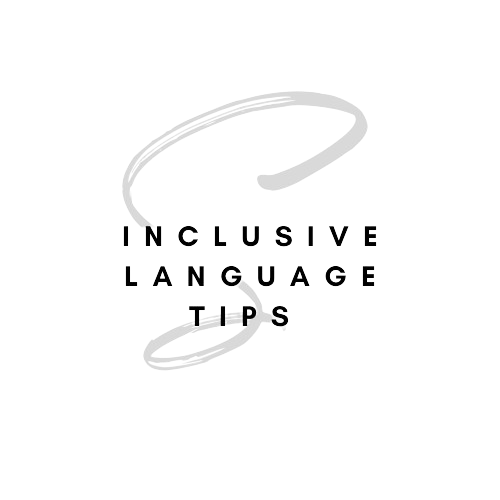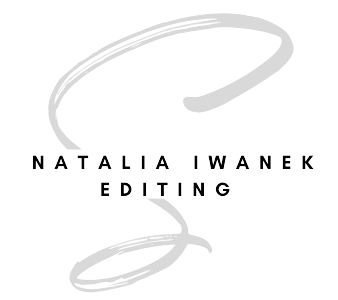Inclusive Language Tips: Avoiding Harm in Our Writing and Editing
 Inclusive language is a currently a timely and much-discussed topic, but its definitions are varied. In this several-part series focusing on avoiding harm in our writing and editing, I focus on defining inclusive language and offering some tips, tricks, and best practices.
Inclusive language is a currently a timely and much-discussed topic, but its definitions are varied. In this several-part series focusing on avoiding harm in our writing and editing, I focus on defining inclusive language and offering some tips, tricks, and best practices.
Before we proceed, let’s define this term.
Inclusive Language Defined
Also known as conscious language, inclusive language can be defined as “language that avoids the use of certain expressions or words that might be considered to exclude particular groups of people.” In other words, the main goal is to make people of all lived experiences and identities feel included, welcomed, and safe.
My Personal Style Choices
As someone who works in a field that focuses on choosing and suggesting language choices and terminology, as well as drawing attention to and avoiding introducing inadvertent harm, this is something that is very important to me. For this reason, inclusive language is something I heavily focus on.
However, please note that language is ever-evolving, and, as writers and editors, we need to constantly update our working knowledge of terminology and/or best practices. Nevertheless, when in doubt, always defer to how individuals and/or communities identify.
One final note before we proceed: In this piece, some of my style choices for certain equity-deserving communities are based on my personal lived experiences, which I would be glad to discuss in further detail. A terminology talk is something that I always very much enjoy with colleagues!
Inclusive Language Tips – How to Make Your Text More Inclusive
Undoubtedly, it can be difficult to know where to begin. Conscious, or inclusive, language is an immense topic, as equity-deserving communities are diverse and varied. For this reason, it is difficult to include all relevant topics. In addition, much debate exists within the communities regarding best practices. However, the following is based on my personal experiences over the years and could be considered a way for beginners to start their Inclusive Language journeys, before continuing to more detailed and specific inclusive language choices. Take what serves you and always continue learning and unlearning.
Inclusive Language Tips – How to Learn about Language and Terminology Used by Various Equity-Deserving Communities
- Firstly, read extensively about the experiences of various equity-deserving groups, which you are not a part of. This includes historical documents, current events, literature, political science, international relations, and more. Consider how communities are represented and whose voices are not included and/or represented.
- Secondly, learn from these equity-deserving communities, but compensate individuals, communities, and organizations for their emotional labour.
- Hire sensitivity, or authenticity, readers, if writing about a community that is not your own.
- Be sure to hire editors from the specific community, if writing about an experience that is not your own.
- Finally, for editors, consider passing on the work to a fellow editor from that particular community, if the experience is not your own.
- Consider different standards used in various geographical areas. Terminology used in Canada and the United States may not be necessarily used in Great Britain.
- Recognize that language is ever-evolving, and keep up-to-date with changes in inclusive language.
- Always defer to how specific individuals and/or communities self-identity.
Some helpful questions to consider when writing and editing:
- Consider if the text truly needs to draw attention to race, ethnicity, gender identity, sexual orientation, size, faith. Why? Does this serve a specific purpose?
- Next, reflect if the representation reinforces harmful tropes and stereotypes?
- Does this text consider individuals’ and communities’ intersectional identities? (Ex: Alex is white, queer disabled, and immigrant.)
- How about the use disability-affirming language? (How is the disability experience portrayed? Why? Does it avoid harmful tropes and stereotypes? Does it consider person-first versus identity-first language? Which Theoretical Model of Disability does it consider?)
- Does this text use 2SLGBTQIA+-affirming language? (Does it avoid assuming pronouns? Does it respect pronouns, including the singular “they”? Does it avoid misgendering and deadnaming? Does it avoid harmful tropes and stereotypes?)
- Additionally, does it avoid unnecessarily gendered language?
- Does this text appropriate culturally-specific terminology?
- Are possessives being avoided when referring to communities?
- Does it follow capitalization best practices? (Ex: Indigenous Peoples.)
- Finally, does it use style choices, such as italics, bold, or quotations to “other” communities? (Ex: Does the text avoid using italics when including non-English words? Does it avoid hyphenating immigrant communities in the diaspora?)
Be sure to check my other blogs in this series, including
- “Avoiding Harm in Our Editing and Writing,”
- “Plain Language Tips,”
- “Accessibility Tips,”
- “Disability-Affirming Language,”
- “The Problem with Italicizing Foreign Terms,”
- “The Singular ‘They,’,” and
- “2SLGBTQIA+-Terminology.”
What did you think of these inclusive language tips? I’d love to hear your suggestions! For inclusive language projects, including style guide development, please visit my inclusive language page, which lists my experience and rates. Contact me for more information about your project needs.
